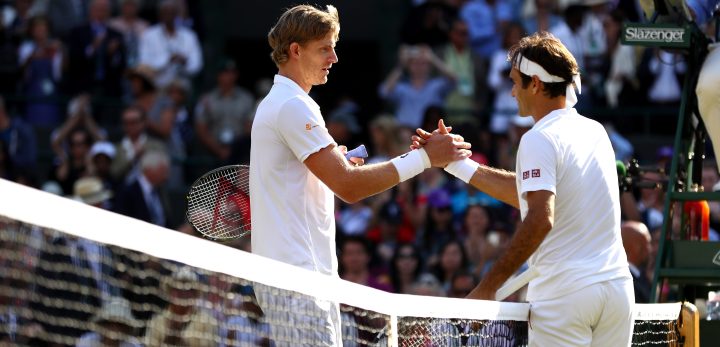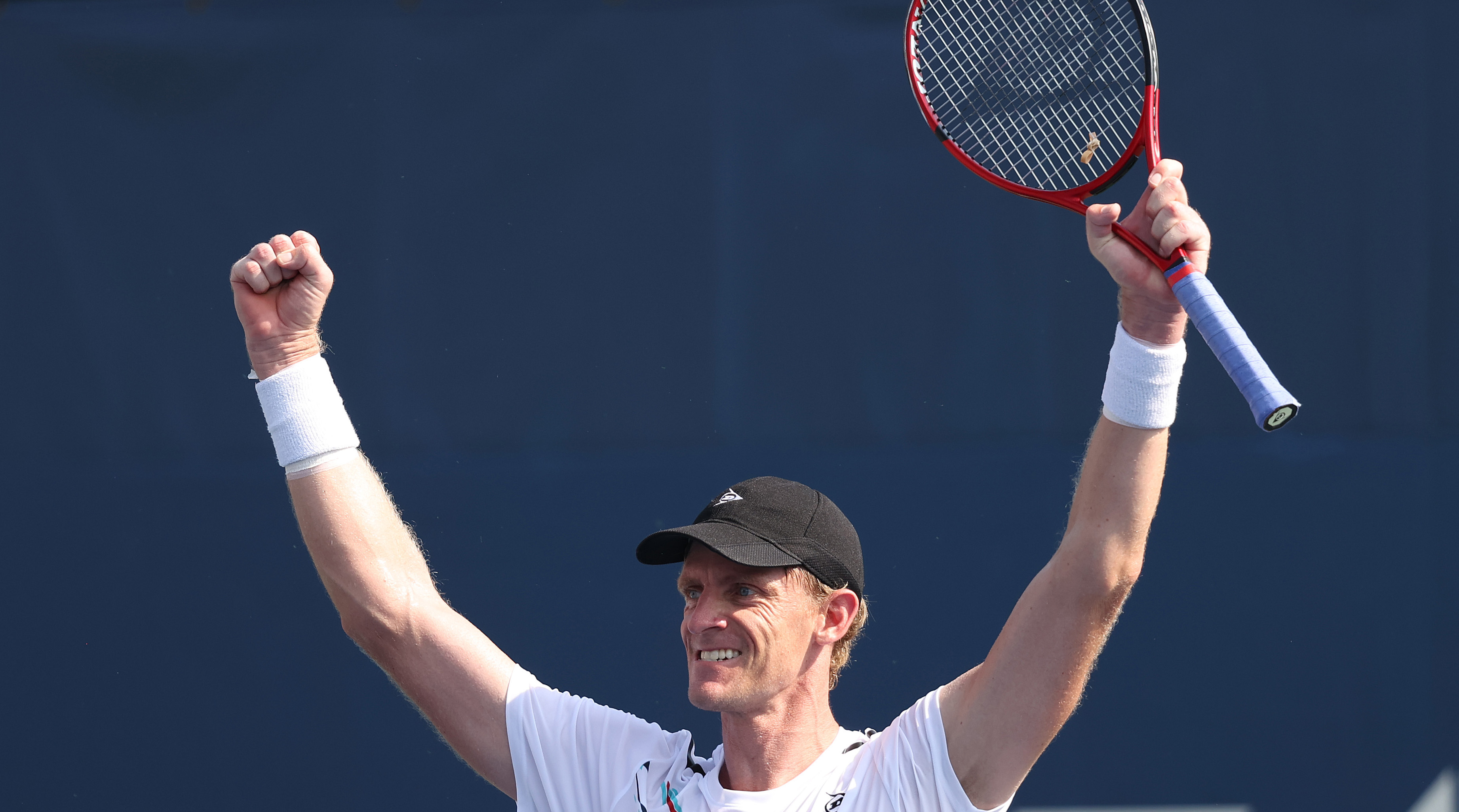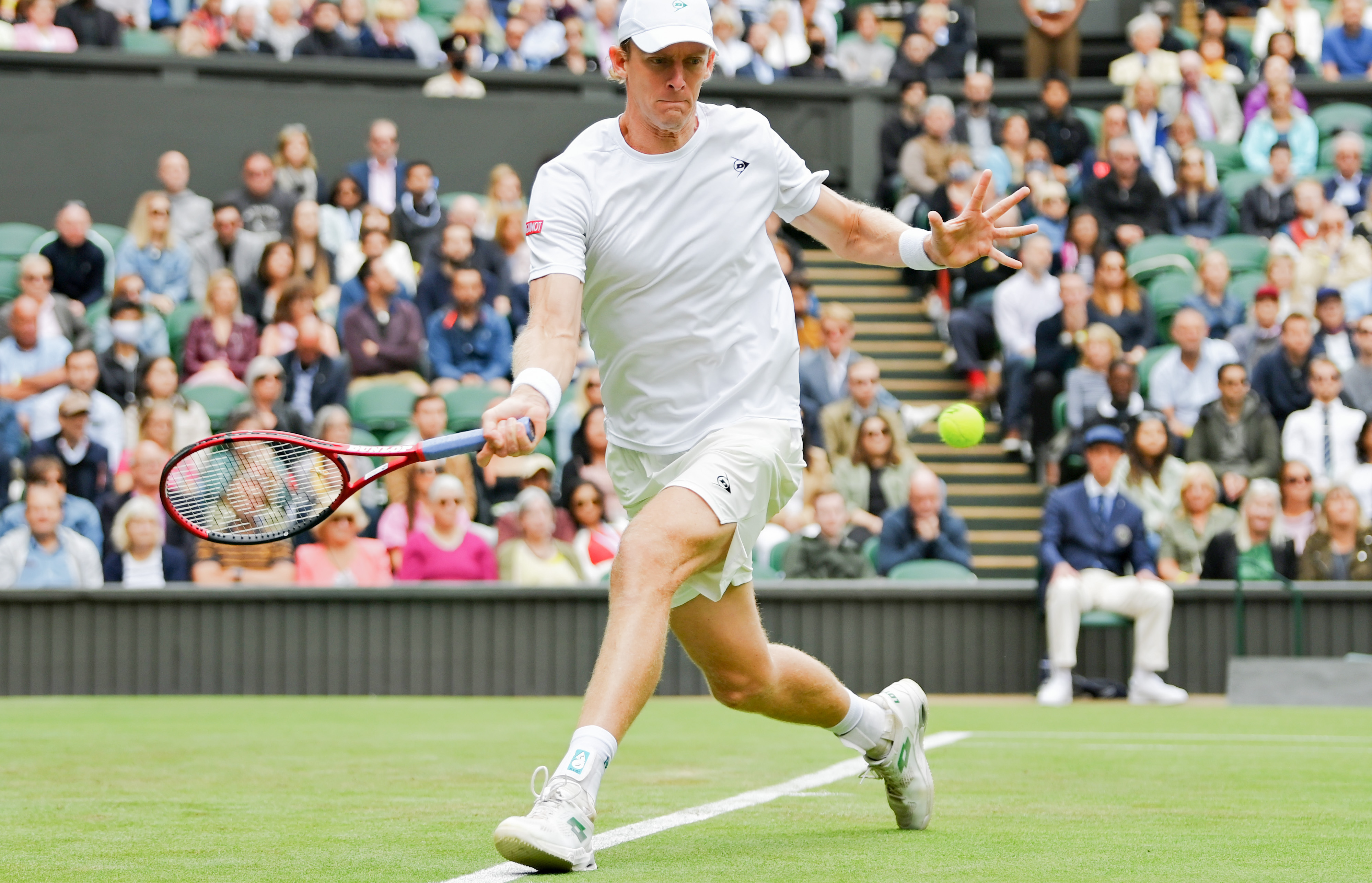SA STAR QUITS
Kevin Anderson came close to the summit of tennis in a golden era

Veteran South African tennis player Kevin Anderson has played his final shot as a professional and can look back with satisfaction at an impressive career.
There is no telling how good Kevin Anderson’s record could have been had his career not been regularly interrupted by injury, or more crucially, had it not overlapped with the three greatest men’s players of all time.
Winning tournaments and going deep in Grand Slams in a sport played by millions socially and thousands professionally, is hard. Doing it during the time of the peak of Roger Federer, Rafa Nadal, Novak Djokovic as well as Andy Murray, Stan Wawrinka, Juan Martin Del Potro and relative newcomers such as Stefanos Tsitsipas and Dominic Thiem, is harder still.
On Tuesday, the 35-year-old South African Anderson called time on a 15-year professional career that hit some high peaks and also endured several deep lows.

Kevin Anderson of South Africa celebrates match point against Jiri Vesely of the Czech Republic during their singles first-round match at the 2021 US Open at the Billie Jean King National Tennis Center in Flushing Meadows, New York on 30 August 2021. (Photo: Matthew Stockman / Getty Images)
Seven career titles, two Grand Slam singles final appearances, $17.73-million in prize money and a career-high world ranking of No 5 are impressive numbers by any measurement. In all, he played 606 professional matches winning 354 for a 58% winning ratio.
Could he have achieved more with better luck? Certainly. Could he have done worse? Most definitely. To use the tired sporting cliché, “it is what it is”. Or rather, “it was what it was”.
“I’ve experienced so many different challenges and emotions; this sport can be exhilarating and, at the same time, lonely,” Anderson said in a retirement statement.
“I’ve had my ups and downs, but I wouldn’t change it for anything. My journey helped me become the man who I am today. Today, I finally arrived at the difficult decision to retire from professional tennis.
The people and businesses the State Capture commission recommends for prosecution
Made the most of his talent
The best way to sum up Anderson’s career is that he extracted the most he could from a body that often let him down in an era when the big three were rewriting the way tennis is played and approached.
Anderson’s 2.03-metre frame made him one of the biggest servers on tour, but he wasn’t as mobile as some slightly smaller players. Perhaps he was the right man at the wrong time in some ways. In the 1990s and into the early 2000s, men’s tennis was power based with servers such as Pete Sampras reigning supreme.
But the rise of Federer and Nadal, and later Djokovic, saw the sport move to a more rounded game that required a mixture of power and finesse. Anderson never stopped working on trying to maximise his major weapons and develop the weaker elements of his game.
The fact that he made the 2017 US Open final and the 2018 Wimbledon final at the age of 32, underlines that he was constantly improving. Unlike many of his contemporaries, Anderson turned pro at the relatively advanced age of 21 after a successful collegiate tennis career and continued to improve into his 30s, instead of hanging on.
He was an All American three times at the University of Illinois and won the 2006 NCAA doubles title alongside Ryan Rowe and made the singles semifinals in 2007, shortly before turning pro.
Anderson’s rise up the rankings was steady, not spectacular. He ended 2007 at 221 in the world. By 2008 year-end it was 104, but injuries set him back the following year as he dropped to 161. But 2010 saw a rise of exactly 100 places as he finished the year at 61 and it wasn’t until 2011 that Anderson won his first pro title at the Johannesburg Open.
He broke into the top 20 in 2013 for the first time and stayed there for the better part of three years, hitting the top 10 for the first time in October 2015. More injuries followed in 2016 as his ranking plummeted, but Anderson fought back to finish 2017 in the top 20 again, which included the US Open final.
It set him up for a superb 2018 that included two titles — in Vienna and New York — and of course that famous trip to the Wimbledon final, where an exhausted Anderson lost in straight sets to Novak Djokovic.
The 2017 US Open final appearance was surprising as Anderson was ranked 32 in the world at the time. He became the lowest-ranked player to reach a US Open final and the following year he played in the second-longest match in Wimbledon history.
In 2018 Anderson famously reached the tournament final after a six-hour, 36-minute semifinal win over John Isner, following a superb victory over Federer in the quarterfinals.

Kevin Anderson stretches to play a forehand in his singles second-round match against Novak Djokovic of Serbia at Wimbledon in 2021. (Photo: Mike Hewitt / Getty Images)
Home court
It was the pinnacle of a career that started at age six on a home court in Bryanston where father Michael and brother Gregory made for good hitting partners. His father was not the A-type tennis parent, but he certainly gave Kevin a push and an opportunity.
“There is not a single line in terms of the balance of a parent going over the top because it’s different for everybody,” Anderson told me in an interview from Wimbledon in 2018.
“The way my father pushed me may have been over the line for some people and under the line for others. I certainly never felt burnt out or wishing I was doing something else other than hitting tennis balls.
“I’ve always enjoyed the theory that the harder you work and the more you put into it, the better you can become. The sacrifice versus reward play-off is always something that motivated me.
“Having the court at home did give us more playing time, but I don’t buy that theory (that it was defining) completely because we had an inner passion for tennis and my dad did too. If we hadn’t had a court at home, we would have found other solutions.
“For a while we moved to Bryanston and didn’t have a court out back, but we went down to the Bryanston Country Club and played every day.
“Having the court at home did make things easier, but it’s impossible to say that I wouldn’t have come this far had we not had a court. I accept I had the chance to go and hit balls even on my own at our home court, but it’s impossible to say where I would be, had things been different.”
Whatever the reasons, Anderson nearly reached the summit of tennis in an era when it was harder than ever to cross that threshold. By any objective measure, his career has been stellar.
Off the court, Anderson received the Arthur Ashe Humanitarian Award in 2019 and was a longtime member of the ATP Player Council, of which he is currently president.
“Thank you to all the fans who watched, cheered and have been there for me along the way. I will always appreciate the outpouring of support you showed me,” Anderson wrote in his retirement statement.
“I am so thankful for the wonderful things that have come my way purely because I was a part of this sport.
“As a kid, my dad used to tell me that success isn’t defined by results, but by the effort and sacrifice you make along the way in becoming the best you can be. I gave it my best.” DM



















 Become an Insider
Become an Insider
Absolutely great career and a great role model for South African tennis – it’s incredibly difficult today to make it to the very top levels of this sport if you grow up in South Africa. In a bygone era we punched above our weight and had dozens of players at the top of the game, but nowadays (& over the past 2 decades) our tennis infrastructure has largely collapsed – whilst we have active junior competition, there is nothing to progress to – there’s hardly any professional level competition played. Over the past 10 years, the international standard of tennis has become so high that if you are not competing internationally from age 15 or 16 onwards, it’s incredibly challenging to break through to the highest levels of the game. Kevin was able to do that – an incredible feat. Kevin no doubt set the example of what can be achieved for his younger compatriot Lloyd Harris – another outlier who has found a way to compete at the very top levels of the game. Well done Kevin on a sterling career!